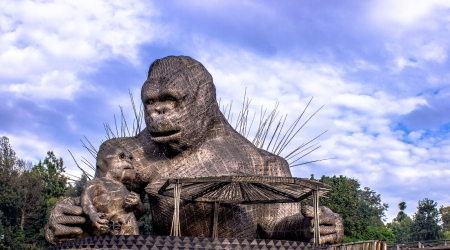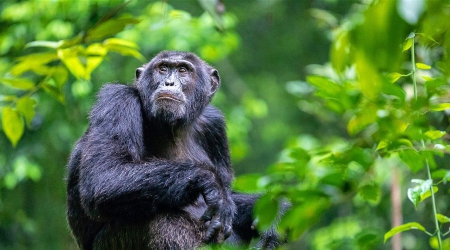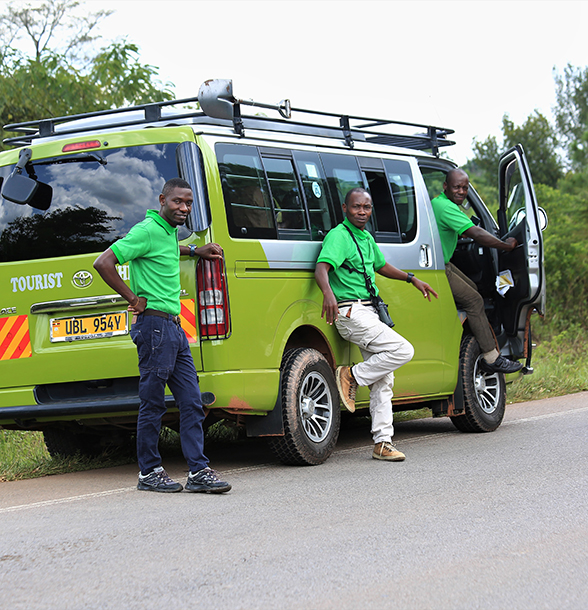Semliki National Park is one of Uganda’s oldest wildlife reserves, located in Bundibugyo district in the country’s western region. Established in 1926 as Toro game reserve to protect Uganda kobs and other antelopes. It was renamed Semuliki national reserve in 2005.
Formerly known as Toro Game Reserve, Semuliki National Park spans 542 square kilometers between Ntoroko and Bundibugyo District and is situated in a picturesque rift valley between the Rwenzori Mountains and Kijura escarpment of Lake Albert.
Along the Semuliki River, crocodiles and hippos are easily noticed. More than 300 species of butterflies, including 46 types of woodland swallowtails, and 235 types of moths have been identified. The highest population of Uganda kobs and birds are found in Semliki National Park, which is well-known for this fact. The park offers a wide range of activities together with a rich animal population. A total of 53 species of mammals, including antelopes, buffaloes, Uganda kobs, waterbucks, leopards, lions and forest elephants, as well as primates like the black-and-white colobus monkey, olive baboons, red-tailed monkey and vervet monkey, can all be found in this reserve.
Semliki National Park is the ideal place to go birding because it is home to a variety of bird species, including 435 species found in lowland tropical forests such as Snowy-headed Robin-Chat, White-starred Robin, Lowland Akalat among others
Many features in Semuliki Valley are more typical of Central Africa than East Africa. The Semuliki River, which serves as the international border is a miniature version of Congo River. The forest is home to a variety of Central African wildlife species and the area is populated by a Batwa pygmy community that originally lived in the Ituri. Additionally, grass-thatched huts are shaded by West African oil palm trees. This park offers a flavor of Central Africa without requiring visitors to leave Uganda.
The wet season may cause large portions of this low-lying park to flood, serving as a fleeting reminder that the entire valley once lay at the bottom of a lake for seven million years.
ATTRACTIONS IN SEMULIKI NATIONAL PARK.
Semuliki National Park is a popular tourist site with many intriguing features that draw plenty of visitors. Some of these include;
Hot springs.
In Semuliki National Park, hot springs are the main draw. The reserve has two hot springs: Bitente – a male hot spring with diameter of 12 meters and Nyasimbi, a female hot spring with a boring geyser that shoots out hot, bubbling water streaming to about 2 meters up in the air, providing a magnificent view. Because the water from these hot springs is so hot, visitors and tourists often boil eggs and potatoes in the hot pool of water from the springs. The water is always at 100 degrees Celsius.
Diverse Vegetation.
As an extension of the enormous Ituri forest, Semuliki National Park is one of Africa’s richest regions for both flora and fauna. The National Park is made up of low and tropical woodlands, including one of the oldest and most biologically diversified forests, with over 336 different tree species, including 24 restricted tree species such Euphorbia and Chrysophyllum begui. Awe-inspiring natural wonders like the Semuliki River and continuously flowing hot springs may be found in Semuliki National Park.
Primates.
Primates like monkeys can be found in the park, making it an ideal location for primate trekking. These primates reside in the low tropical forests here, which are an extension of the Ituri forest. Baboons, grey-cheeked mangabeys, black-and-white colobus, red colobus from Central Africa, blue, red-tailed, de Brazza’s, vervet, and Dent’s Mona monkeys are some examples of primates.
Birds.
This park is home to more than 400 bird species, including several endemic to central Africa, such as the Long-tailed Hawk, Congo Serpent Eagle, Lyre-tailed Honeyguide, Black-Wattled Hornbill, and Nkulengu Rail. The famous Sudan-guinea biome bird species, such as the Piapiac, Red-throated Bee-eater, Purple Glossy-starling, and Guinea-Congo Forest biome species, which are only found in the Semuliki National Park in the entirety of East Africa as they are only found in West Africa, are also found in the Semuliki Park.
Semuliki River
The Semuliki River spans over 160 kilometers. One of the water sources that feed the huge river Nile is this murky forest river. Crocodiles, hippos, and countless birds inhabit the river.
Culture
Semliki national reserve stretching across the floor of the Semuliki valley on the remote western side of Rwenzori Mountains is surrounded by four distinct tribes living on the outskirts of the reserve, these tribe include Bwamba farmers at the base of Rwenzori Mountains, the Bakonjo cultivators on mountain slopes, batuku cattle keepers and Batwa pygmies from the Ituri forest. Semliki valley is a perfect location for culture walks as it has thatched huts shaded by African oil palms.
ACTIVITIES THAT ARE DONE IN THE PARK.
Semliki national park offers interesting safari activities which include;
Game Drives.
Game drives in the wildlife reserve are highly intriguing because they take place while viewing a variety of creatures, including chimpanzees, grey-cheeked mangabeys, black-and-white colobus monkeys, forest elephants, pygmy antelopes, and lions. Alongside mammals and monkeys, it’s possible to observe a number of bird species, including the Leaf-love, Yellow-throated Nicator, and White-throated Blue Swallow. With a 4 wheel drive car, you may go on a game drive across the reserve and explore three main trails: the Kirumia Trail, the Red Monkey Trail, and the Sempaya Nature Trail. In the reserve, nocturnal creatures including Pottos, the bush baby, bats, and owls can be observed during nighttime game drives.
Visiting Sempaya Hot Springs
Visiting Sempaya hot springs, including both Nyasimbi and Bitente, the male and female springs, is a magnificent experience that fosters a greater understanding of God’s grandeur and brilliance. When you visit the hot springs, you can see hot water bubbling and steaming up to a height of two meters as locals and visitors cook food and boil eggs over the hot pool water.
Primate tracking
Many primates can be found in the Semliki National Reserve’s forest, including chimpanzees, black and white colobus monkeys, baboons, grey-cheeked mangabeys, Central African red colobus monkeys, Dent’s mona monkeys, and de Brazza’s monkeys, which are often seen climbing trees. Primate tracking in the reserve is a 4-6 hour exercise that entails finding the primates in their natural environments.
Boat Ride
Boat trips on the 160-kilometer Semliki River, which flows from the Rwenzori Mountains to Lake Albert and into River Nile, should never be overlooked as you arrange your safari in the Semliki National Park. Watching the river meander through the rift valley is such a lovely sight, and you can observe Waterbucks, lizards, Nile crocodiles, and pygmy hippos as they live along the river banks while on this boat ride.
Guided Nature Walks and Hiking
In the valley of Semliki National Reserve, marshes, savannah grassland, and a portion of the Ituri forest allow for guided nature hikes and treks. A knowledgeable tour guide leads nature hikes and treks in the forest, and while participating in this spectacular safari activity, you may see birds, primates like chimpanzees and baboons in the Mugiri Forest, as well as other animals like lions and Uganda kobs in the reserve’s forested woodlands.
Birding Safaris
One of the best places for birdwatching is the Semliki National Reserve, where more than 400 different species of birds can be seen in the wetlands, woodlands, and on the Semliki River. The reserve is a sanctuary for birds, home to five species that are unique to the area. Semliki National Reserve is home to a variety of birds, including the shoebill, vibrant red bee-eater,
Batwa cultural experience
Pygmy Batwa people from the Democratic Republic of the Congo’s Ituri forest lived on the outskirts of the Semliki National Reserve. The Batwa cultural experience takes visitors through the Batwa people’s history and traditional ways of living. Along the trip, they may see how the Batwa build houses from local materials, gather local herbs for medicine, and light fires.
HOW TO GET THERE AND WHEN TO VISIT
There are two main routes that connect Kampala to Fort Portal: one via Mubende, which takes about five to six hours to travel, and the other via Masaka, Mbarara, and Kasese (7-8 hours). It is 50 kilometers from Fort Portal in the far west. The Semliki Valley Wildlife Reserve is signposted 30 kilometers down the Bundibugyo Road, after the road leading to Semuliki National Park, near the small commercial center of Karugutu. You can fly from Kajjansi or Entebbe international airport to Semuliki airstrip or Kasese on a scheduled airplane.
The Semuliki National Park is accessible all year long. The greatest times to travel are, however, between April and June and July and September, when it is dry. Driving around the park is simpler during these dry months due to less mud. When it rains, as it does between December and March and October and November, it makes it challenging to move throughout the park. Rain causes the rivers to fill up, flooding some areas of the park.















